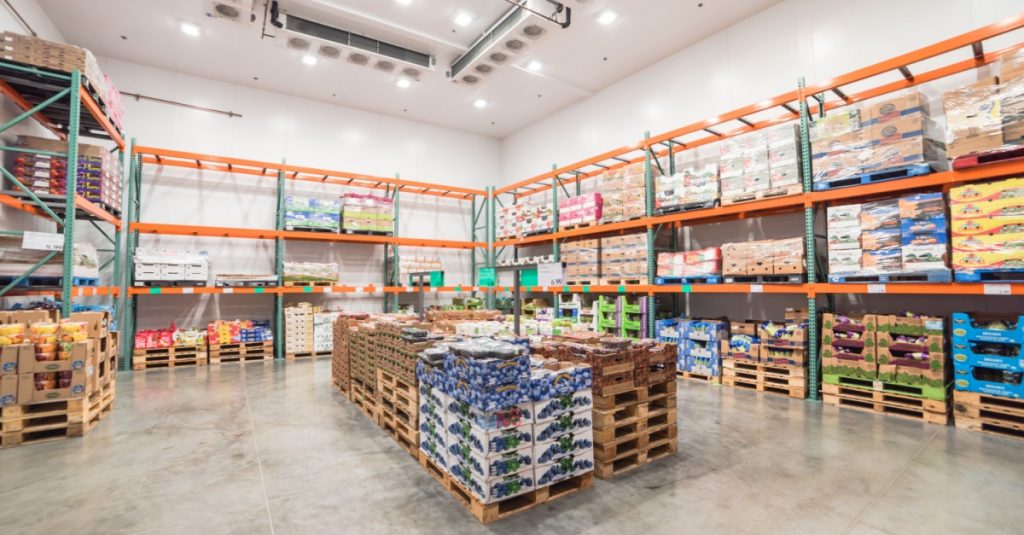
Cold Chain Logistics: A Comprehensive Guide
Cold chain logistics involves maintaining the correct temperature of food and medications throughout the entire transportation process. This procedure is essential for upholding quality and safety in sectors dealing with temperature-sensitive goods. This guide will explore efficient cold chain strategies designed for small businesses. Our goal is to provide effective, lasting solutions that address your needs and create a beneficial influence for the future. Through our emphasis on user-friendly and environmentally-conscious approaches, our aim is to equip you with the information needed to improve your cold chain operations effectively and sustainably.
What is Cold Chain Logistics?
The process of a cold supply chain includes storing and moving perishable goods in specific environments to ensure they remain fresh and safe. Every item, whether it be time and temperature-sensitive food items like dairy and seafood or vital medications and chemicals, needs precise temperature regulation to prevent decay.
To address these transportation challenges, Keep It Cold offers a well-optimised cold supply chain solution that ensures product quality while meeting customer needs. This minimises the industrial waste that helps to improve the company’s sustainability and profitability, improving both its finances and the environment.
Importance of Cold Chain Logistics
Product Quality Preservation
Ensuring the quality of the product throughout transport and storage is a crucial part of the supply chain process. Cold chain logistics guarantees that perishable goods like food and pharmaceuticals remain safe and effective for consumption or use. Businesses can ensure the quality of their products and meet customer expectations and regulatory standards by overseeing transportation conditions through real-time monitoring.
Regulatory Compliance
Several industries, such as pharmaceuticals and food, must comply with strict regulations regarding the transport and storage of temperature-sensitive products. Following these guidelines with effective logistics management not only prevents legal consequences but also establishes credibility with customers, securing the future viability of the business.
Customer Satisfaction
Consistently providing top-notch products increases customer satisfaction and loyalty. A properly managed cold chain decreases loss, damage, and returns of products, guaranteeing that customers get fresh and safe items. Efficient cold chain management can improve operational effectiveness, which will have positive impacts on the environment and financial performance. Monitoring products in real time during transport ensures they are in the best condition, which boosts customer trust and supports steady growth.
Key Components of Cold Chain Logistics
Temperature-Controlled Storage
Using refrigerators, freezers, and temperature-controlled storage facilities is crucial for keeping perishable items fresh before and during transportation. These systems guarantee that products stay at the necessary temperature range, preventing them from spoiling.
Transportation
Specialised vehicles equipped with refrigeration units are necessary for transporting temperature-sensitive products. This consists of refrigerated trucks, shipping containers, and air freight, to make sure that products are kept at the temperature range during shipment.
Monitoring Systems
Temperature monitoring in real-time is essential for keeping track of conditions throughout the supply chain. They assist in keeping the necessary temperature range and facilitate prompt response to any deviations found, guaranteeing the safety and quality of the product.
Packaging Solutions
Effective insulated and temperature-regulating packaging is essential for safeguarding products during shipping, particularly for extended transit durations. These packaging solutions assist in preserving the correct temperature and avoiding changes during transportation.

Building Your Sustainable Cold Chain Strategy (Actionable Steps)
Planning
Begin by determining the temperature needs of your items, opting for environmentally friendly packaging, and meticulously choosing suppliers who support your sustainability objectives. Make sure that all parts satisfy your criteria.
Implementation
Enhance warehouse storage by implementing energy-efficient systems and collaborating with eco-friendly transportation providers. Utilise data-based monitoring for efficient waste reduction by tracking temperature.
Measurement and Improvement
Consistently monitor important performance metrics such as energy consumption and product quality. Consistently improve procedures to increase effectiveness, lower emissions, and promote sustainable practices in the long run.
Challenges in Cold Chain Logistics
Common Issues
The cold chain logistics sector is equipped enough to tackle numerous obstacles with innovative solutions. By focusing on keeping temperature controls at their best and guaranteeing equipment reliability, we can improve infrastructure and real-time tracking. These developments are essential for setting the stage for a resilient and prepared cold chain process.
Impact of Failures
Efficient handling of cold chain logistics transforms obstacles into avenues for expansion. By prioritising strong cold chain solutions, we improve food safety and pharmaceutical effectiveness, proactively handle regulatory issues, and establish solid consumer confidence. Adopting sustainable methods not only reduces risks but also sets the foundation for the industry’s long-term success and dependability.
Implementing a Successful Cold Chain Strategy
Assessing Needs
Start by assessing the temperature needs of your products and understanding the preferences of your target audience. Take into account variables like the duration products can be stored and the way they are stored to create a successful cold chain plan.
Choosing Partners
Choose logistic partners that prioritise dependability and are in line with your sustainability objectives. Search for businesses that have demonstrated success and environmentally sustainable techniques for effective and accountable cold chain management.
Technology Integration
Utilise technology to improve the effective cold chain. IoT devices along with advanced software can offer real-time monitoring and data analytics to maintain precise temperature control and reduce spoilage.
Best Practices for Cold Chain Management
Standard Operating Procedures
Having well-defined Standard Operating Procedures (SOPs) for managing temperature-sensitive products is essential. Their main objectives are to maintain the best possible shelf life, avoid temperature fluctuations, and adhere to health and safety regulations, protecting both the quality of the product and regulatory compliance.
Training Staff
Providing employees with training on the best practices of cold chain management is crucial. Knowledgeable employees efficiently handle temperature-sensitive products, decrease risks from temperature fluctuations, and enhance general health and safety in the workplace.
Regular Audits
Frequent audits are crucial for both adherence and enhancement. Their role involves identifying inconsistencies, enforcing SOPs, and pinpointing areas for improvement to uphold product quality and health and safety regulations.
Future of Cold Chain Logistics
Trends
Growing developments in cold chain logistics involve higher levels of automation and the incorporation of eco-friendly methods, leading to improved efficiency and decreased environmental footprint.
Impact of Regulations
Changing rules are transforming cold chain logistics, with more stringent guidelines improving safety and adherence while also raising operational intricacy.
Innovations
Emerging technologies like IoT sensors and advanced tracking systems are poised to transform cold chain management, enhancing monitoring and decreasing spoilage.
Conclusion
In conclusion, the upcoming advancements in cold chain logistics offer substantial advantages, including cost reductions, improved brand image, and increased environmental accountability. Participating in continuous training and utilising available resources will help organisations remain competitive in this rapidly changing industry.

Effective supply chain management requires an organised, well-managed logistics operation to ensure parts, products, and services move from suppliers through the supply chain to the end user on time and in good condition. A logistics operation aims to provide better efficiency, reduce operation costs and promote service quality.
With such importance placed on successful logistics operations within the supply chain, at The Institute of Supply Chain Management (IoSCM) we offer a range of professional qualifications in logistics and transport, each carefully designed to match modern businesses’ needs and upskill professionals at all stages of their logistics careers.
